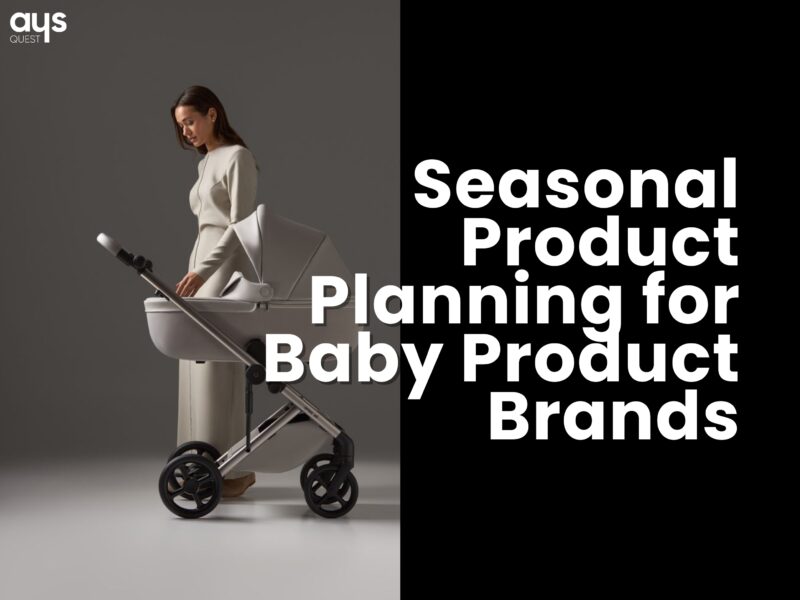In the competitive baby products market, timing is everything. Parents shop year-round for essentials like clothing, toys, and care items — but seasonal trends can significantly influence buying decisions.
From cosy winter wear to summer travel gear, seasonal product planning ensures that your brand stays relevant, meets demand, and maximises sales during peak buying periods. Whether you’re selling baby clothes, feeding accessories, nursery décor, or toys, having a seasonal strategy can make your business more profitable and predictable.
Here’s a complete guide to planning seasonal products for your baby product brand.
1. Understand the Seasonal Buying Cycle for Baby Products
Baby product demand is influenced by both seasonal weather changes and special events.
Examples of seasonal buying trends:
- Spring: Lightweight clothing, outdoor strollers, and allergy-friendly bedding.
- Summer: Swimwear, travel accessories, sun protection gear.
- Autumn: Transitional clothing, baby-proofing products for active toddlers.
- Winter: Warm clothing, blankets, heaters, indoor play equipment.
- Special occasions: Baby showers, first birthdays, and festive holidays like Christmas or Diwali.
Understanding these cycles will help you stock the right products at the right time.
2. Research Market Trends in Advance
To plan effectively, you need to forecast demand months before the season starts.
How to stay ahead:
- Use Google Trends to identify product interest spikes.
- Monitor competitor launches and seasonal promotions.
- Follow parenting blogs and social media to spot emerging product trends.
By preparing early, you avoid last-minute stock issues and can market products before demand peaks.
3. Plan Product Launches Around Seasonal Themes
A well-timed product launch can make all the difference.
Examples:
- Launch a new summer stroller in late spring to catch early buyers.
- Release winter baby clothing lines in early autumn to beat the competition.
- Introduce festival-themed baby gift sets before major holidays.
By aligning your launches with upcoming seasons, you tap into customer excitement and readiness to buy.
4. Adjust Inventory and Production Schedules
Seasonal demand often requires higher inventory levels — but overstocking can lead to waste, especially for products that babies quickly outgrow.
Tips for smart inventory planning:
- Use past sales data to predict seasonal demand.
- Partner with suppliers who can handle quick restocks.
- Keep storage needs in mind for bulky seasonal items like cribs or winter jackets.
Efficient inventory management ensures you can meet seasonal demand without excessive overstock.
5. Create Seasonal Marketing Campaigns
Your marketing should reflect the season — both in visuals and messaging.
Ideas for seasonal campaigns:
- Spring: “Fresh Starts for Baby” with pastel-themed product photography.
- Summer: “Baby’s Summer Adventures” featuring outdoor gear and travel-friendly products.
- Autumn: “Cosy & Comfy” with warm-toned product images.
- Winter: “Bundle Up Baby” with gift sets, blankets, and warm clothing.
Use email newsletters, Instagram posts, and seasonal blog content to promote collections.
6. Cater to Seasonal Safety Needs
Parents prioritise safety, especially in extreme weather. Seasonal product planning should account for this.
Examples:
- Summer: Sunscreens for babies, UV-protected hats, lightweight breathable fabrics.
- Winter: Anti-slip socks, warm but breathable clothing, indoor play safety gear.
- Rainy season: Waterproof stroller covers, mosquito nets.
By addressing seasonal safety concerns, you position your brand as a trusted choice for parents.
7. Leverage Limited-Edition Seasonal Products
Creating urgency is a proven way to drive sales. Limited-edition products make customers act quickly before items sell out.
Examples:
- Holiday-themed clothing and toys.
- Seasonal colours or patterns for baby gear.
- Special edition gift sets for baby showers or festivals.
Limited editions also encourage repeat customers who want to collect your seasonal designs.
8. Use Data Analytics for Continuous Improvement
Seasonal planning isn’t a one-time task — it’s a cycle that improves with each year’s data.
What to track:
- Sales peaks for each product category.
- Most and least popular seasonal products.
- Customer feedback on seasonal lines.
This data helps you refine future collections and avoid stocking products that don’t sell well.
9. Plan for Seasonal Packaging and Branding
Packaging is part of the seasonal experience. Parents often buy baby products as gifts, so your packaging should reflect the time of year.
Examples:
- Winter: Warm colours, snowflake designs.
- Summer: Bright, cheerful patterns.
- Holiday season: Gift-ready boxes and ribbons.
Thoughtful seasonal packaging can increase perceived value and gift appeal.
10. Extend Seasonal Sales with Cross-Selling and Bundling
Once customers are shopping for seasonal products, they’re more likely to buy related items.
Example bundles:
- Summer travel set: Baby carrier + sun hat + portable fan.
- Winter cosy pack: Blanket + footed pyjamas + baby-safe heater.
- Spring newborn kit: Lightweight onesies + swaddle + baby lotion.
Bundling increases your average order value while offering convenience to parents.
Final Thoughts
For baby product brands, seasonal product planning is a game-changer. It allows you to meet customer needs at the right time, stay ahead of competitors, and keep your inventory moving efficiently.
By understanding seasonal buying cycles, researching trends early, timing product launches, and tailoring marketing campaigns to the season, your brand can enjoy steady growth throughout the year.
Remember — parents shop with both practicality and emotion in mind. A baby brand that anticipates their needs each season not only makes sales but also builds long-term trust.





